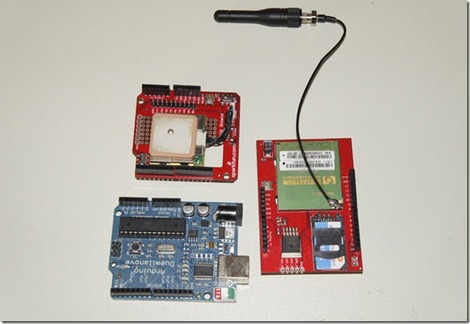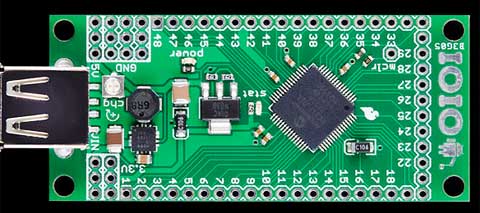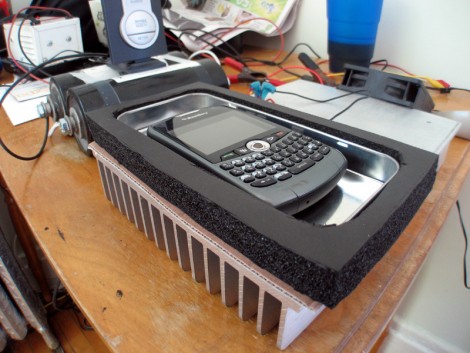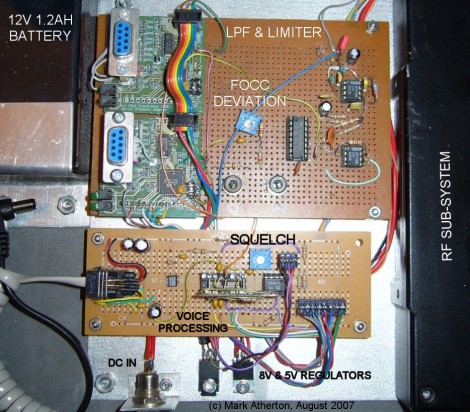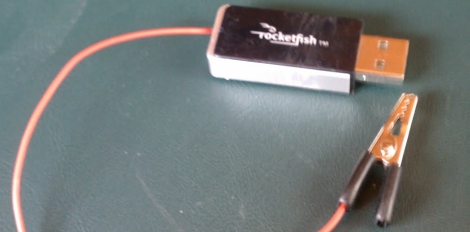
[Kyle] was digging through a box of junk he had lying around when he came across an old USB Bluetooth dongle. He stopped using it ages ago because he was unsatisfied with the limited range of Bluetooth communications.
He was going to toss it back into the box when an idea struck him – he had always been a fan of WiFi wardriving, why not try doing the same thing with Bluetooth? Obviously the range issue comes into play yet again, so he started searching around for ways to boost his Bluetooth receiver’s range.
He dismantled the dongle and found that the internal antenna was a simple metal strip. He didn’t think there would be any harm in trying to extend the antenna, so he soldered an alligator clip to the wire and connected the CB antenna in his truck. His laptop sprung to life instantly, picking up his phone located about 100 feet away in his house. He took the show on the road and was able to pick up 27 different phones set in discoverable mode while sitting in the parking lot of a fast food chain.
While it does work, we’re pretty sure that the CB antenna isn’t the most ideal extension of the Bluetooth radio. We would love to see what kind of range he would get with a properly tuned antenna.
Keep reading to see a quick demonstration of his improvised long-range Bluetooth antenna.


